We put the Sony Xperia 1 IV through our rigorous DXOMARK Audio test suite to measure its performance both at recording sound using its built-in microphones, and at playing audio back through its speakers.
In this review, we will break down how it fared in a variety of tests and several common use cases.
Overview
Key audio specifications include:
- Stereo speakers (bottom center and top center)
- Headphone jack
- Intelligent wind filter
- Hi-Res Audio
Scoring
Sub-scores and attributes included in the calculations of the global score.
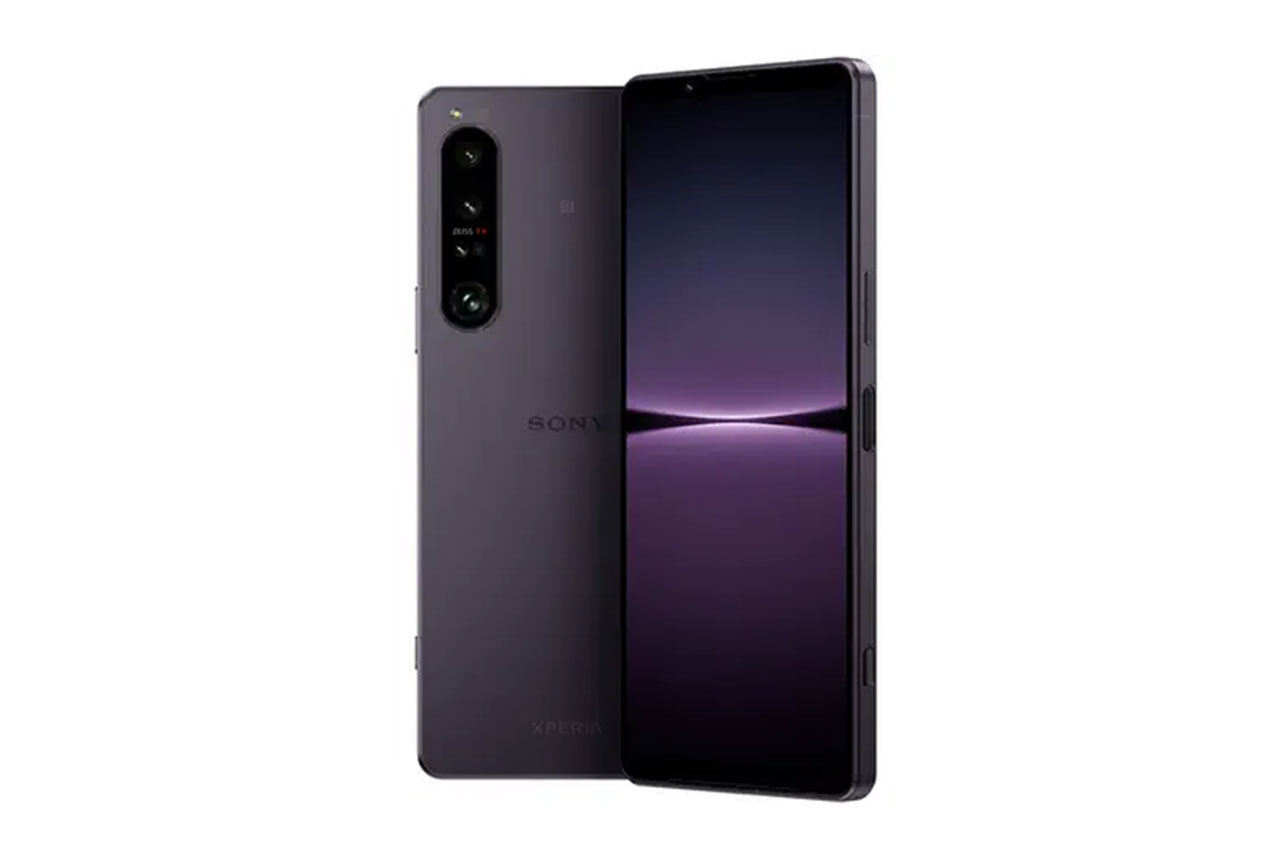
Sony Xperia 1 IV


 59th
59th
 28th
28th
Playback
Pros
- Warm and mellow sonority
- Impossible to occlude speakers with your hands
Cons
- Left speaker glitchy at the start
- Missing information between high-midrange and lower treble
- Poor volume performance
- Compression at any volume has negative impact on dynamics
- Severe distortion at maximum volume
Recording
Pros
- Natural timbre in most use cases (but a little thin)
- Good Dynamics performance overall
- Relatively good background quality in all use cases
- Occlusions relatively well handled
Cons
- No audio zoom
- Pumping lower treble at high sound pressure levels
- Thin tonal balance in most use cases
With a DXOMARK Audio score of 121, the Sony Xperia 1 IV delivers a fairly average performance and cannot quite keep up with the best in its class. In Playback it delivers fairly consistent audio quality across all use cases, but with voices in dialogues sounding veiled and unclear it cannot really be recommended for watching movies with the built-in speakers.
The phone benefits from a warm and mellow sonority and it’s virtually impossible to occlude the speakers with your hands while holding the phone. But our testers also noticed a few issues. In terms of tonal balance, there is a loss of information in the midrange area; compression impairs dynamics at all volume levels, and distortion can be severe even at minimum volume. The device struggles in the volume category, with inconsistent volume steps and a too quiet minimum volume. It also appears to start playing back sound in mono until the second speaker slowly fades in with a few seconds delay, which can be slightly irritating.
When using the Xperia 1 IV as a recording device it does best for main camera and selfie video but audio quality is close when recording voice memos. Timbre is natural if a bit thin in most use cases and Dynamics are good. Background sound quality is well preserved and user hand position on the device has no impact on recording quality. Our testers observed a pumping lower treble at high sound pressure levels, though, and the Sony lacks an audio zoom feature which is pretty common on other devices in its class.
Test summary
About DXOMARK Audio tests: For scoring and analysis in our smartphone audio reviews, DXOMARK engineers perform a variety of objective tests and undertake more than 20 hours of perceptual evaluation under controlled lab conditions.
(For more details about our Playback protocol, click here; for more details about our Recording protocol, click here.)
The following section gathers key elements of our exhaustive tests and analyses performed in DXOMARK laboratories. Detailed performance evaluations under the form of reports are available upon request. Do not hesitate to contact us.
Playback
Sony Xperia 1 IV
163
DXOMARK engineers test playback through the smartphone speakers, whose performance is evaluated in our labs and in real-life conditions, using default apps and settings.
In Playback the Sony Xperia 1 IV offers a decent Timbre, with some good potential, especially in the low end, but overall quality is held back by tonal balance inconsistencies. While the low-midrange and upper bass are quite upfront, high-midrange and treble appear lackluster. In addition there is a lack of bass and low end extension. The end result is a sonority that sounds dark and almost muffled.
In terms of Dynamic the Sony is held back by compression, even at low volume. Attack lacks sharpness at soft and nominal volumes and is crushed by distortion at high volumes. Bass is not precise and while punch could be considered good at soft volume, it is far too much compressed at maximum volume.
Spatial performance is average overall. Strangely the stereo takes a few seconds to settle correctly but otherwise the sound image is perfectly centered. Wideness does not stand out but is noticeable, especially when gaming, and localizability is quite mediocre. It’s hard to pinpoint individual sound sources and the sound scene as whole is not too well defined. Distance rendering is inadequate as well, with voices that lack clarity in timbre and seem further away than they are.
In the Volume category, the Sony does poorly. Loudness and maximum volume is ok but impacted by compression and distortion. Minimum volume on the other hand is too low and barely audible. Volume steps are inconsistent, with the lower ones being to quiet and close to each other, and the upper ones plateauing.
Our testers noticed a range of artifacts on the Xperia 1 IV, including noticeable dynamics processing as well as large-band distortion and clipping at maximum volume. On the plus side, the Sony’s sound output is not impacted when any of the speakers are covered.
Listen to the tested smartphone’s playback performance in this comparison with some of its competitors:

Timbre
Sony Xperia 1 IV
158
The Timbre score represents how well a phone reproduces sound across the audible tonal range and takes into account bass, midrange, treble, tonal balance, and volume dependency. It is the most important attribute for playback.

Dynamics
Sony Xperia 1 IV
149
The Dynamics score measures the accuracy of changes in the energy level of sound sources, for example how precisely a bass note is reproduced or the impact sound from drums.
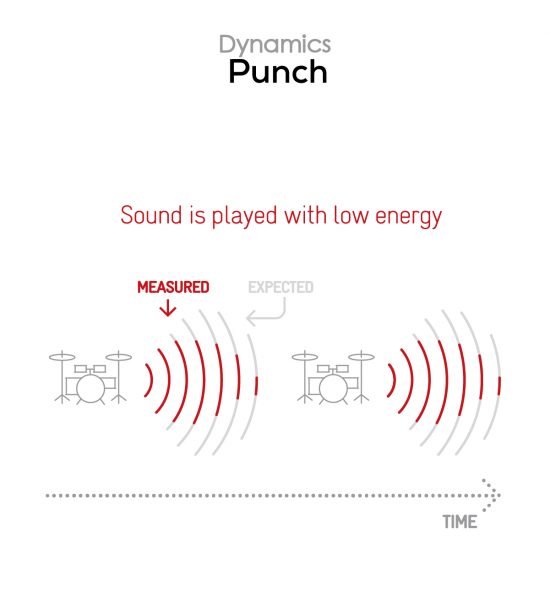


Spatial
Sony Xperia 1 IV
162
The sub-attributes for spatial tests include pinpointing a specific sound's location, its positional balance, distance, and wideness.
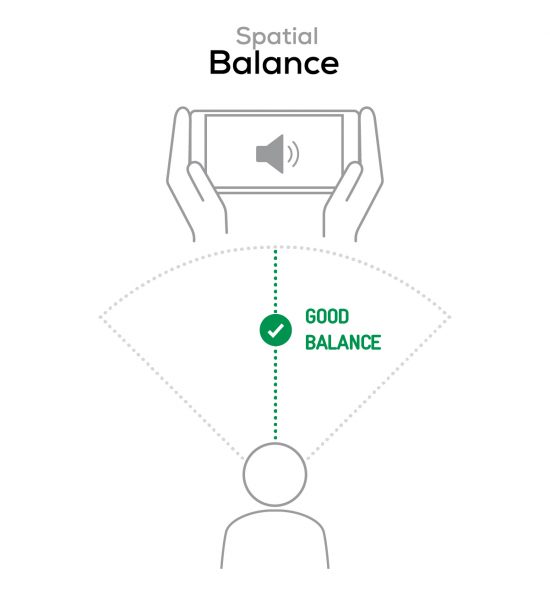
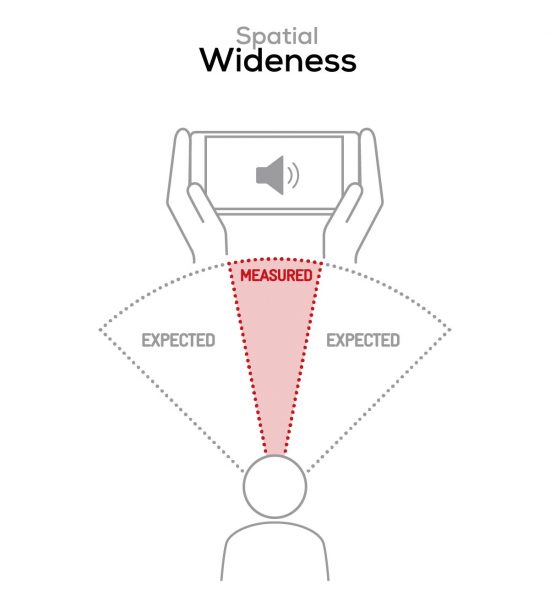

Volume
Sony Xperia 1 IV
162
The Volume score represents the overall loudness of a smartphone and how smoothly volume increases and decreases based on user input.
| Hip-Hop | Classical | |
| Sony Xperia 1 IV | 72.5 dBA | 67.7 dBA |
| Oppo Reno8 Pro 5G | 72.5 dBA | 72.1 dBA |
| Samsung Galaxy S22 Ultra (Exynos) | 74.1 dBA | 70.2 dBA |

Artifacts
Sony Xperia 1 IV
157
The Artifacts score measures the extent to which the sound is affected by various types of distortion. The higher the score, the less the disturbances in the sound are noticeable. Distortion can occur because of sound processing in the device and because of the quality of the speakers.
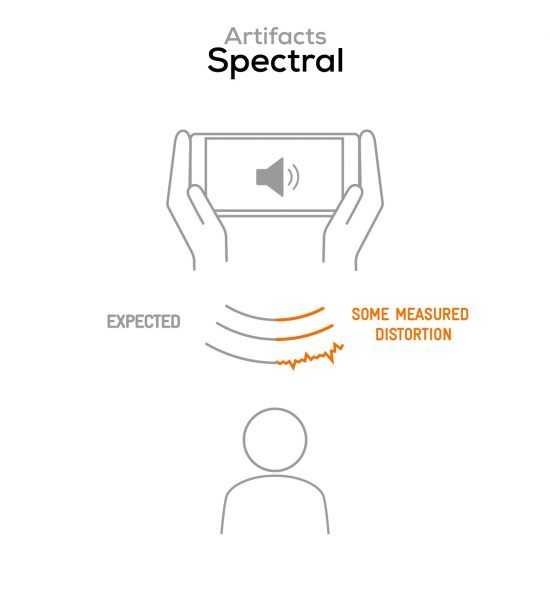

It represents the distortion and noise of the device playing our test signal (0 dB Fs, Sweep Sine in an anechoic box at 40 cm) at the device's maximum volume.
Recording
Sony Xperia 1 IV
157
DXOMARK engineers test recording by evaluating the recorded files on reference audio equipment. Those recordings are done in our labs and in real-life conditions, using default apps and settings.
The Xperia 1 IV does overall slightly better for Recording than for Playback. Timbre results are fairly average, with generally good treble and midrange in most use cases. The low end mostly sounds a little thin but bass is actually clean and defined when recording loud events, such as concerts. Sound balance might be a little thin and lacking some high-end extension, but it’s actually quite satisfying.
Dynamics are good, with a well-rendered envelope, precise voices and a fairly sharp attack that can sound rounded only at high sound pressure levels. The Signal-to-noise ratio is great across all use case, with effective noise reduction in the recorder app. Spatial performance leaves some room for improvement. Localizability could be more precise and wideness depends on usage. The stereo scene sounds wide with main camera video in landscape orientation, but narrow in portrait orientation. The memo app is mono by default. Distance rendering is good but voices seem slightly further away, due to a lack of low midrange body.
Recordings volume is relatively quiet in all conditions but the Sony does well at maximum level where we only measured moderate amounts of distortion. Recording artifacts include pumping on shouting voices and loud noises when recording using the selfie camera. Our testers also noticed compression in the memo app. At high sound pressure levels, compression and pumping can appear but the device manages microphone occlusion pretty well. Tonal balance of the background sounds natural and is fairly free of artifacts. It does however lack bass and low-end extension.
Here is how the Sony Xperia 1 IV performs in recording use cases compared to its competitors:

Timbre
Sony Xperia 1 IV
147
The Timbre score represents how well a phone captures sounds across the audible tonal range and takes into account bass, midrange, treble, and tonal balance. It is the most important attribute for recording.

Dynamics
Sony Xperia 1 IV
146
The Dynamics score measures the accuracy of changes in the energy level of sound sources, for example how precisely a voice's plosives (the p's, t's and k's, for example) are reproduced. The score also considers the Signal-to-Noise Ratio (SNR), for example how loud the main voice is compared to the background noise.
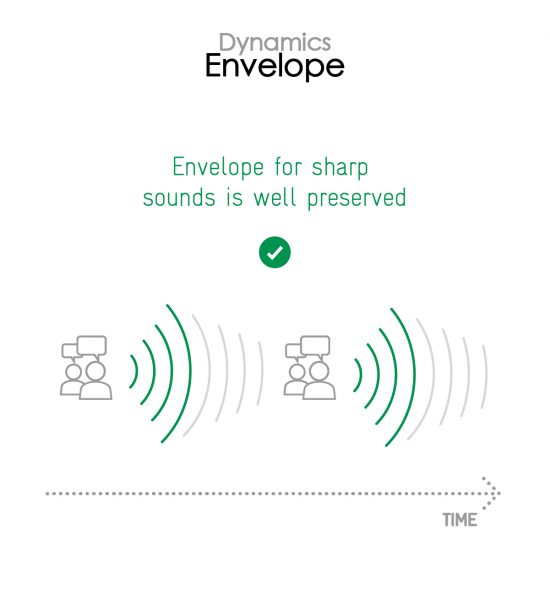
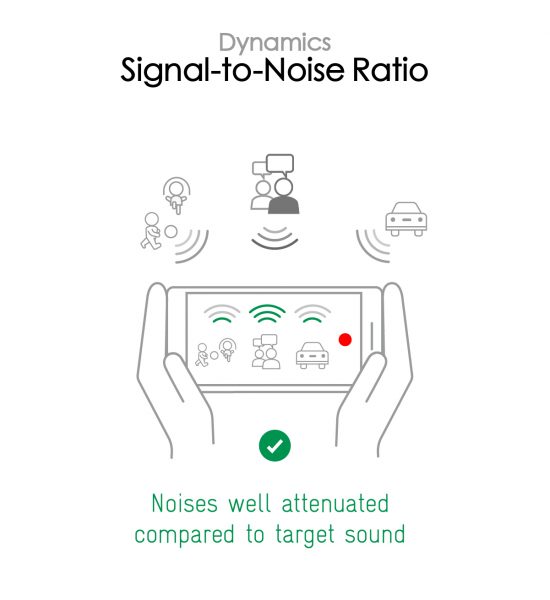

Spatial
Sony Xperia 1 IV
157
The sub-attributes for spatial tests include pinpointing a specific sound's location, its positional balance, distance, and wideness on the recorded audio files.
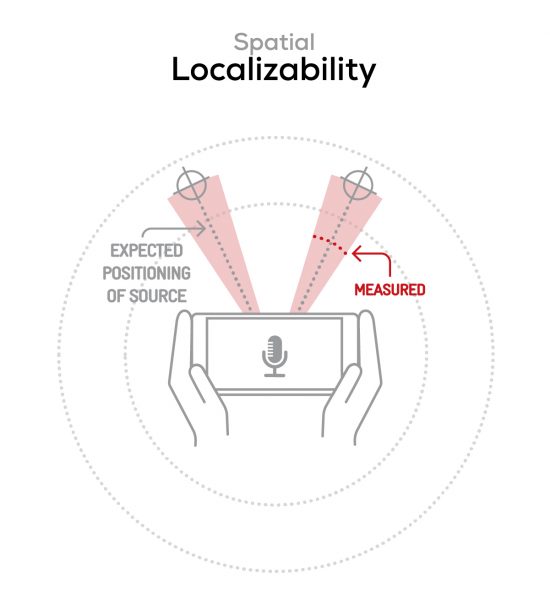
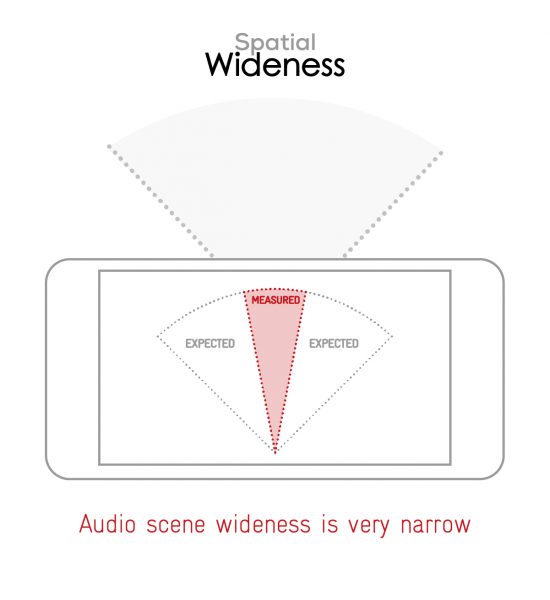

Volume
Sony Xperia 1 IV
170
The Volume score represents how loud audio is normalized on the recorded files and the how the device handles loud environments, such as electronic concerts, when recording.
| Meeting | Life Video | Selfie Video | Memo | |
| Sony Xperia 1 IV | -44.9 LUFS | -25.6 LUFS | -23 LUFS | -37.1 LUFS |
| Oppo Reno8 Pro 5G | -23.2 LUFS | -21.8 LUFS | -18.9 LUFS | -17.8 LUFS |
| Samsung Galaxy S22 Ultra (Exynos) | -28.8 LUFS | -21.7 LUFS | -21.2 LUFS | -23.9 LUFS |

Artifacts
Sony Xperia 1 IV
145
The Artifacts score measures the extent to which the recorded sounds are affected by various types of distortions. The higher the score, the less the disturbances in the sound are noticeable. Distortions can occur because of sound processing in the device and the quality of the microphones, as well as user handling, such as how the phone is held.
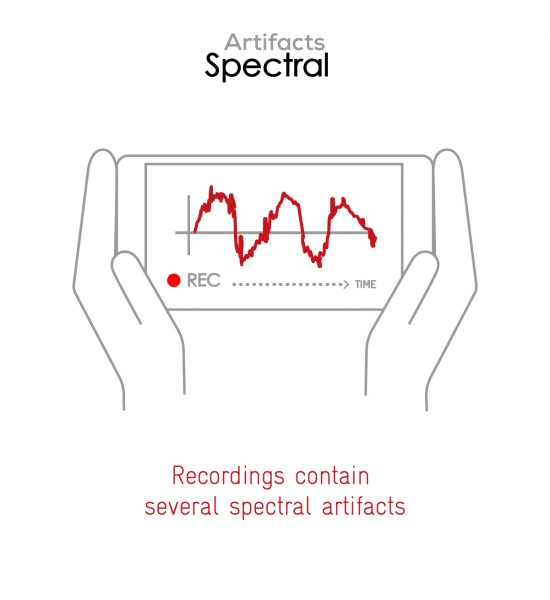
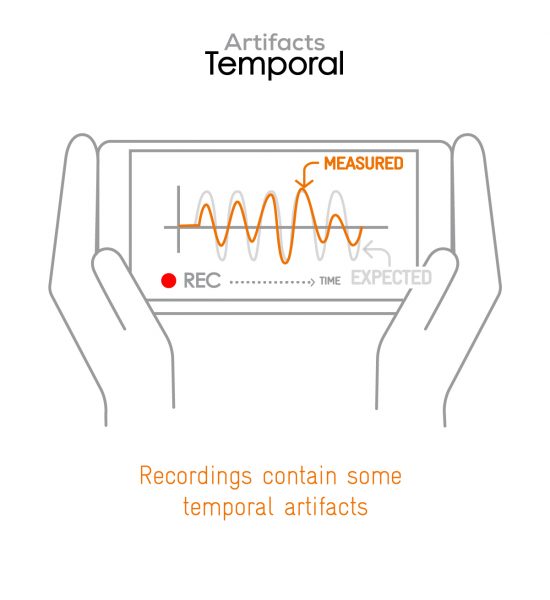
In this audio comparison, you can listen to the way this smartphone handles wind noise relative to its competitors:

Background
Sony Xperia 1 IV
166
Background evaluates how natural the various sounds around a voice blend into the video recording file. For example, when recording a speech at an event, the background should not interfere with the main voice, yet it should provide some context of the surroundings.



 English
English 中文
中文

DXOMARK invites our readership (you) to post comments on the articles on this website. Read more about our Comment Policy.